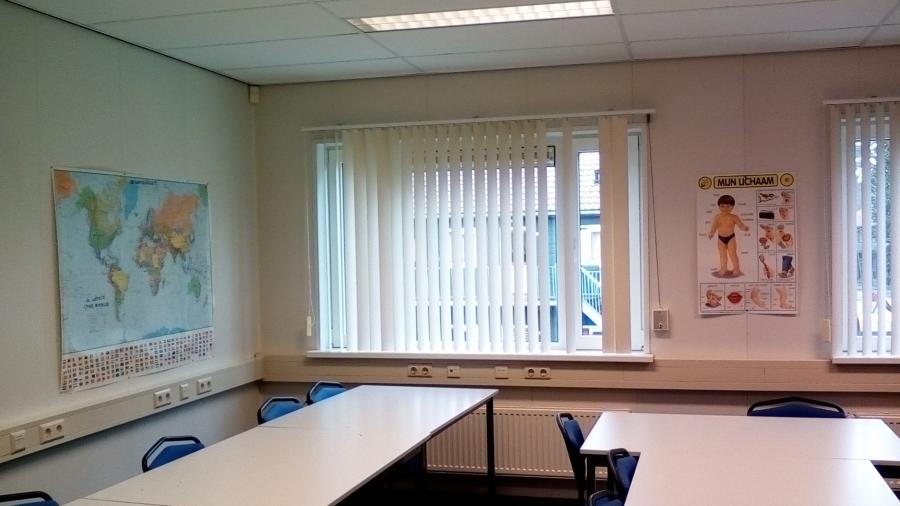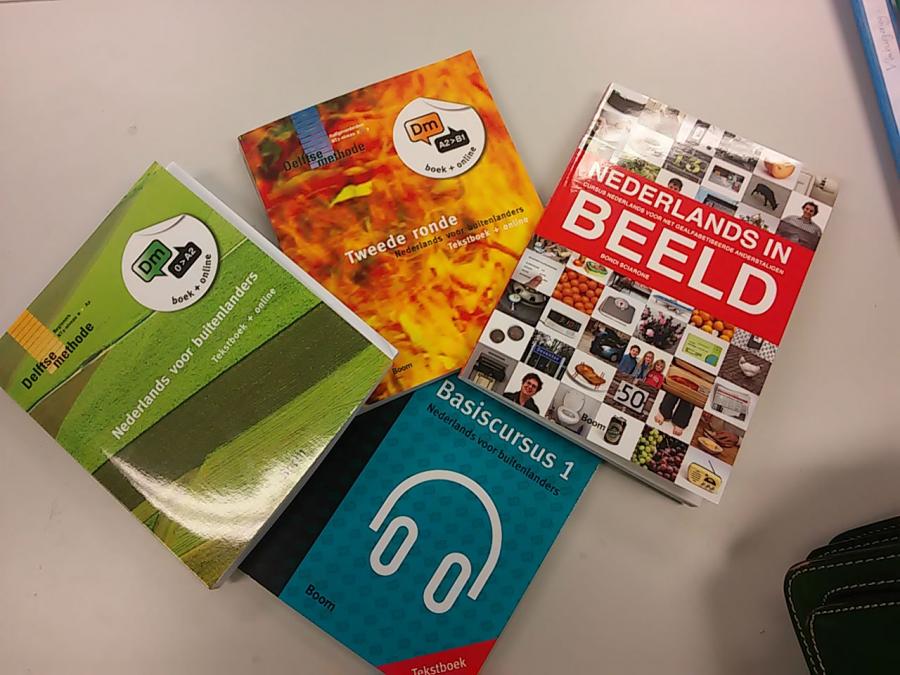
A chat with Vincent of the Oisterwijk Asylum Seekers Center
Vincent is a 23-year-old student from Tilburg who is currently working at the asylum seekers center in Oisterwijk, which was established in 2003. He is also a student of Social Work at MBO (Intermediate Vocational Education) and he had an internship at the asylum seekers center. The center is part of the COA [Central Organization for Asylum Seekers]. We met Vincent and asked him all those questions about asylum seekers and refugees you’ ve always wanted to ask.
How many people are hosted here and where are they from?
The Center hosts about 300 people, both adults and minors. The majority is coming from Syria, Eritrea and Iraq. There are also people from Eastern European countries such as Albania, Serbia and some Roma people. Furthermore, there are asylum seekers from West Africa, and a few from East African countries such as Tanzania. We also host some people from Asia.
How long have they lived here?
It depends because when you apply for asylum in the Netherlands the application is sent to the IND organization (Immigration and Naturalization Services). The IND is in charge of deciding and the procedure varies from case to case.
For example, people from Iran who apply for asylum only obtain it for religious matters or sexual orientation. Assessing this can take a long time. An Iranian woman, for instance, waited for 4 years in the center before she received approval for her resident permit.
However, Syrians and Eritreans get the resident permit almost immediately. They might have to wait in the refugee center for a maximum of 2 years, but this rarely happens. Usually, they obtain the refugee status within one year and a half to one year or even earlier. The amount of time needed to get the permit also depends on the municipality where the refugee center is. Tilburg, for example, assigns residence permits quicker than Den Bosch or Best.
Are there rules asylum seekers have to abide in the center?
Yes, there are basic regulations that require avoiding making noise after 22:00, respecting each other and showing up on the day the documents that assess their presence are stamped. Praying is allowed but religious gathering is not allowed.
What is the process that asylum seekers undergo when they come to The Netherlands?
There are three different locations that deal with newcomers: Ter Apel, Gilze and the international airport of Schiphol.
Schiphol is usually traveled to by people coming from African countries. Once they are there, asylum seekers are kept in a detention center. Schiphol is not the favorite destination. Namely, if the asylum request is not accepted, people are sent back to their motherland without any chance to have their case reevaluated.
Schiphol is not the favorite destination. Namely, if the asylum request is not accepted, people are sent back to their motherland without any chance to have their case reevaluated.
Ter Apel is a village in the Northern part of The Netherlands, close to the border with Germany. It is a big receiving center and the first destination reached by newcomers. Once they are there, asylum seekers are interviewed extensively for three times by IND personnel. The aim of the interview is to assess exactly where asylum seekers come from, by investigating the language they speak and other elements, to see if they meet the requirements for the refugee status. This procedure is very detailed since there are countries such as Somalia where war is not spread all over the territory. In that case, it might happen that asylum seekers will not be given a resident permit and instead, they will be suggested to move to an area of their country where there is no ongoing conflict.
If newcomers meet the requirements, they are spread to different AZCs across the Netherlands. These centers host asylum seekers as well as refugees at different stages of their immigration procedure. There are a number of people waiting for the assessment of the refugee status, others who have already obtained the resident permit and those who are waiting for the availability of social housing. There are also people whose asylum requests have not been accepted. They are waiting to be repatriated or trying to have their cases reevaluated by taking legal actions. Some of them might have to return to where they came from, especially people from Albania, Kosovo as well as Roma people. They are considered to have fled from safe countries.
In Gilze, there is a family location where parents and kids are allowed to stay until the kids become adults. People who were born in The Netherlands or came here at a very young age can obtain a residence permit once they have turned 18, whereas their parents will be repatriated by then.
What happens when asylum seekers get the refugee status?
They have to wait in the AZC until they are assigned to a social housing accommodation. Non-governmental organizations like VWN (Vluchtelingen Werk Nederland) help refugees to find a job as well as with other practical matters. There also other organizations like IOM (International Organization for Migration) which offer financial support and help to people that voluntarily decide to repatriate.
Can asylum seekers choose the city where they will reside? Can they suggest their preference?
No, this will be decided upon by COA, the main organ dealing with asylum requests. The COA assigns asylum seekers to different AZCs in the country. Then, there is a personnel to deal with their intakes, outtakes and the research of social housing as soon as the resident permit is obtained. Exceptions to this procedure only occur in the cases of family reunions and university students.
Are there refugees who came last summer or September 2015 and already obtained the refugee status?
Yes, this is the case of Eritreans and Syrians because Syria is very dangerous and Eritreans who flee are no longer welcome in their country. At AZCs people who got the refugee status are totally free to move. In this center, they only have to prove their presence once a week by getting a stamp on a document.

Dutch classroom in Oisterwijk refugee centre
Here, there are also some unaccompanied minors who are studying and have applied for family reunion with their parents, brothers and sisters.
What about people who do not get the refugee status? Can they still live in the center?
Yes, they can, when they are taking legal actions to have their asylum requests reevaluated. We had a woman in this situation who waited almost 5 years before getting the resident permit.
What practical help does the government offer to asylum seekers? Are they taught Dutch in the AZC?
They receive a weekly financial contribution with which they have to provide themselves with food and clothes. In the case of families, the amount increases, but not proportionally, compared to the amount a single person receives.
The ones who got the status are taught by professionals, whereas those who don't have the status (yet) are taught by volunteers. Minors instead, whatever their status is, have to go to school because for them education is compulsory. Here in Oisterwijk, there are also some unaccompanied minors who are studying and have applied for a family reunion with their parents, brothers and sisters. This practice is also possible foradults and that is why The Netherlands is among future refugees considered as a "good country" to apply for asylum. The family reunion is a practice that can take up to 2 years, as it has to be checked whether the families abroad meet all the requirements.

Books employed for Dutch courses
Which language do you use in the Center to communicate with asylum seekers?
Mainly English and German. Sometimes we have Dutch translators but we often rely on asylum seekers themselves.They usually speak more than one language and they are willing to help translate for both their peers and the personnel. Generally, asylum seekers help each otherwith language. Some learn Dutch very quickly and are then able to increasingly help with the communication.
Children learn the fastest. Thus it is common to see them translating for their parents and other adults. Yet, when official communication has to be translated we rely on organizations that offer professional translators. Otherwise, we rely on refugees' and personnel's knowledge, also because the aim is to make asylum seekers as independent as possible.
What activities are being offered in the center?
For those who obtained the refugee status, Dutch lessons are provided twice a week. People also make use of mobile applications to study Dutch. The teaching personnel is often not aware of these apps: on this subject matter, refugees are usually much more up-to-date than Dutch teachers and AZC personnel. It is also possible to do fitness and play volleyball. Other activities are offered by organizations that are independent from the COA and that organize activities, such as handcrafting for children.
People also make use of mobile applications to study Dutch.
Do guests of this center use mobile applications for translations?
Perhaps, but I have not seen it.
Do you know any story of a refugee who has integrated successfully?
Yes. A man from Eritrea named Gebre. He has been living in the center for 2 years and mastered the Dutch language quite quickly. He is taking extra language courses in Eindhoven because he aims to undergo the Integration Exam on the Dutch language and culture as soon as possible in order to be able to pursue higher education. Generally, the time people take to learn the language is relative. Some people are quicker because they are driven by a strong will to start a new life and integrate in the Dutch society.
Are there children in this center who join regular education?
In the Netherlands, education for minors is compulsory and if children do not attend school, government personnel will interfere. Here at the AZC, we have a kindergarten school but when children need to go to higher levels of school, they can join regular schools. That would be the case if they meet a certain level of Dutch and their procedure to get the resident permit is proceeding positively. There is a kid here who goes to the primary school in Oisterwijk.
How did you come so closely involved with the issues related to refugees?
Among my friends, I am the only one working with refugees. I would say that people are not much acquainted with refugees, and if you don't have any contact with this environment, it is less likely that you will be interested in it. My interest in the refugee cause, however, stems from reading the book “If this is a man” by Primo Levi in which the Italian writer reflects upon the extent of atrocity that humankind can reach in horrible situations. For this reason, I chose to study Social Work. I always knew I wanted to work with people. I started to follow the refugee crisis because it was a hot topic in the media that struck me. On top of it, I always liked diversity of people and I believe that since humankind is one, we should all help each other.
All over The Netherlands there have been several demonstrations against refugees, mainly in small villages. Oisterwijk is a small village known to be one of the richest municipalities in the Netherlands. Are residents from Oisterwijk unhappy with the AZC or have they ever had problems with refugees?
No, no problems at all, not any serious case I have heard of. I believe that this is mainly because the center has been here for a long time and Oisterwijk residents are acquainted with the situation. Sometimes, there have been arguments between young asylum seekers and locals, but I think that is normal. We do not have to solve many conflicts, be it internally or outside the camp, only small disturbances.
Thank you for your time, Vincent.